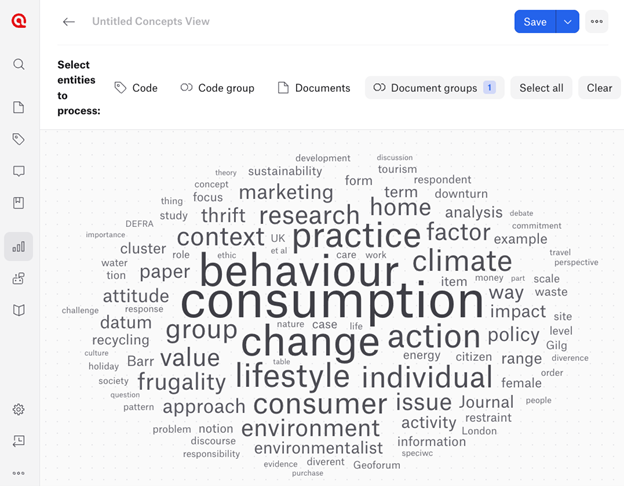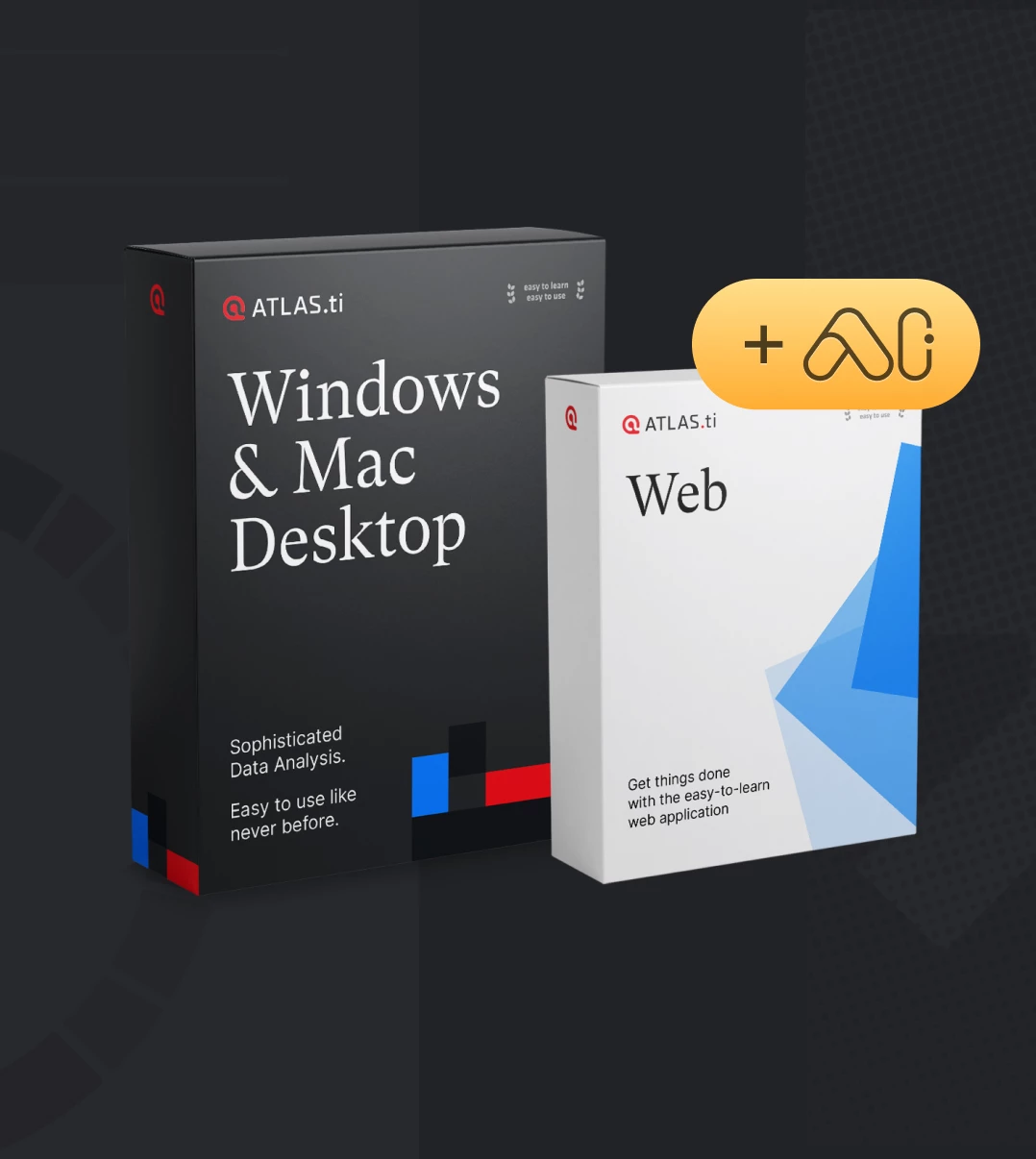Mastering open-ended survey questions: Tips, examples & best practices
Introduction
Open-ended questions in surveys allow respondents to answer in their own words, providing detailed insights that closed questions might miss. These questions can reveal new ideas, opinions, and feelings that are not captured by predefined response options. This article explains what open-ended questions are, compares them to closed-ended questions, discusses when to use them, addresses challenges they may pose, and offers tips on analyzing the responses.

Surveys in research
Surveys are a common method used in research to collect data from a specific population. They help gather information on attitudes, opinions, behaviors, or characteristics by asking participants a series of questions. Surveys can be administered in various formats, such as online questionnaires, telephone interviews, or face-to-face interactions.
Researchers use surveys to obtain quantitative data, qualitative data, or acombination of both. Quantitative data is numerical and can be measured and analyzed statistically. Qualitative data is non-numerical and often unstructured, and it provides insights into the underlying reasons and motivations behind responses.
The design of a survey helps obtain quality results. It involves selecting appropriate questions, choosing the right format, and ensuring that the survey is accessible to the target audience. Questions can be structured in different ways, including open-ended and closed-ended formats. The choice between these types of questions depends on the research objectives and the kind of information sought.
Surveys are widely used in fields like social sciences, market research, public health, and education. They help researchers understand trends and make informed decisions based on the collected data. Properly designed surveys can yield valuable information that contributes to the advancement of knowledge in various disciplines.

Surveys can be categorized based on their methodology and mode of administration. Cross-sectional surveys collect data at a single point in time, providing a snapshot of the population's characteristics or opinions. Longitudinal surveys collect data from the same subjects over an extended period, allowing researchers to observe changes and developments.
The mode of administration also varies. Online surveys are convenient and can reach a wide audience quickly, but may suffer from lower response rates. Telephone surveys allow for personal interaction but can be time-consuming and costly. Mail surveys can reach participants who lack internet access but may have slower turnaround times.
When designing a survey, it's important to consider factors such as question clarity, order, and length. Ambiguous or leading questions can introduce bias and affect the quality of the data. The sequence of questions can influence how survey respondents interpret and answer them. Keeping the survey concise encourages completion and reduces the likelihood of respondent fatigue.
Ethical considerations are also essential. Researchers must ensure confidentiality and obtain informed consent from participants. Data collected should be stored securely and used responsibly.

What is an open-ended question?
An open-ended question is a survey prompt that allows respondents to provide meaningful answers in their own words without restricting them to predefined choices. These questions encourage participants to provide detailed responses, offering insights into their thoughts, feelings, or experiences. Unlike closed-ended questions, which limit answers to options like "yes" or "no," open-ended questions enable a deeper understanding of the subject matter.
Open-ended questions are valuable in research for capturing qualitative data. They help uncover nuances that might be missed with standardized responses. For example, instead of asking, "Are you satisfied with our service?" an open-ended version would be, "What are your thoughts on our service?" This approach invites respondents to elaborate on specific aspects they appreciate or areas needing improvement.
These questions are particularly useful when exploring new topics or when the researcher seeks to understand the reasoning behind certain behaviors or opinions. They allow participants to highlight issues that the researcher may not have considered, providing a broader perspective on the subject.
A few examples of open-ended questions in surveys include:
- "Can you describe your experience using our product?"
- "What suggestions do you have for improving our services?"
- "How does this policy change affect you personally?"
While open-ended questions can yield rich and informative data, they also present challenges. Analyzing the responses requires more time and effort, as the answers are varied and need to be coded or categorized for meaningful interpretation. Despite this, the depth of information gained often justifies the additional work involved.
Incorporating open-ended questions in surveys can enhance the quality of the data collected. They provide an opportunity for respondents to express themselves fully, leading to insights that support more informed decision-making in research.

Open-ended questions vs. close-ended questions
Open-ended and closed-ended questions are two fundamental types of survey questions, each serving different purposes in data collection. Understanding the differences between them helps researchers design effective surveys.
Open-ended questions allow respondents to provide answers in their own words without limitations. They facilitate qualitative data that can reveal insights into opinions, experiences, and motivations. For example, asking "What features do you value most in a smartphone?" invites detailed responses that may highlight aspects the researcher hadn't considered.
Closed-ended questions, on the other hand, offer predefined response options like in multiple choice questions or on Likert scales. They generate quantitative data that is easier to analyze statistically. An example is "How often do you use your smartphone for internet browsing? (a) Daily, (b) Weekly, (c) Monthly, (d) Rarely." These questions simplify data collection and make comparisons across respondents straightforward.
The choice between open-ended and closed-ended questions depends on the research objectives:
- Depth vs. breadth: Open-ended questions provide depth by allowing respondents to elaborate, while closed-ended questions offer breadth by enabling data from a larger sample size to be analyzed quickly.
- Exploration vs. confirmation: Open-ended questions are useful for exploring new topics or when the range of possible answers isn't known. Closed-ended questions are suitable for testing hypotheses when possible responses can be anticipated.
- Data analysis: Responses to open-ended questions require qualitative analysis methods, which can be time-consuming. Closed-ended questions produce data that can be easily quantified and subjected to statistical analysis.
Each type has its advantages and limitations. Open-ended questions can uncover unexpected insights but may result in varied responses that are challenging to categorize. A closed-ended question can make analysis easier but might miss nuances in respondents' thoughts.
In practice, combining both types within a survey can be effective. For instance, a survey might start with closed-ended questions to gather general information and include open-ended questions to delve into specific areas of interest. This approach leverages the strengths of both question types.
When designing surveys, it's important to consider the respondent's experience. Open-ended questions require more effort to answer, which might affect completion rates. Balancing the number of open-ended questions with closed-ended ones can help maintain engagement while collecting valuable data.
Understanding the distinctions between open-ended and closed-ended questions enables researchers to tailor their surveys to their specific needs, enhancing the quality of the data collected.

Data analysis made easy with ATLAS.ti's tools
Download a free trial of ATLAS.ti to make the most of your qualitative research.
When to use open-ended survey questions
Open-ended survey questions are useful for collecting detailed and nuanced information that closed-ended questions might not capture. They are particularly effective when deeper insights are needed to understand complex issues or when the range of possible responses isn't known in advance.
Exploring new or complex topics
When researching unfamiliar areas or complex subjects, open-ended questions help uncover information that may be missed in predefined responses. They allow participants to introduce new ideas, perspectives, or concerns that the researcher might not have anticipated. For example, asking "What are your thoughts on emerging technologies in education?" enables respondents to share diverse opinions and insights.
Understanding motivations and reasoning
To comprehend the reasons behind certain behaviors or opinions, open-ended questions encourage respondents to explain their thought processes. This can reveal underlying motivations, beliefs, or factors influencing their actions. Instead of asking "Did you find the training useful?" an open-ended question like "How did the training impact your work performance?" invites detailed responses that shed light on the effectiveness of the program.
Gathering detailed feedback and suggestions
When seeking specific feedback or suggestions for improvement, open-ended questions provide respondents with the opportunity to express their thoughts freely. This is valuable in product development, customer satisfaction surveys, or service evaluations. For instance, asking "What improvements would you like to see in our product?" allows customers to highlight particular features or issues that need attention.
Capturing personal experiences and emotions
In contexts where personal experiences and emotional responses are important, open-ended questions enable respondents to share their stories in their own words. This is particularly relevant in fields like healthcare, social work, or psychology. Questions such as "Can you describe how the new policy has affected you?" elicit detailed narratives that can be analyzed for common themes and emotional impacts.

Challenges with open-ended survey questions
Open-ended survey questions can yield valuable insights, but they also present certain challenges that researchers need to address. Being aware of these issues helps in designing surveys that balance depth of information with practicality.
Time-consuming data analysis
Analyzing responses to open-ended questions requires significant time and effort. Each response must be read carefully, and researchers often need to code or categorize the information to identify patterns and themes. This process can be labor-intensive, especially with a large number of participants. Unlike closed-ended questions that produce quantifiable data ready for statistical analysis, open-ended responses demand a qualitative approach, which can extend the timeline of the research project.
Variability in response quality
The quality and depth of responses to open-ended questions can vary widely among participants. Some respondents may provide detailed and thoughtful answers, while others offer brief or unclear remarks. This variability can make it challenging to interpret the data consistently. Additionally, respondents might use different terminology or express ideas in ways that are difficult to compare directly, complicating the analysis further.
Lower response rates and participant burden
Open-ended questions require more effort from respondents than closed-ended ones. This additional effort can lead to lower response rates or incomplete answers, as participants may skip these questions or provide minimal input to save time. Surveys with too many open-ended questions might discourage completion altogether, impacting the overall data collection. Balancing the number of open-ended questions with the survey's length is essential to maintain participant engagement.
Difficulty in quantifying qualitative data
Converting qualitative responses into quantifiable data poses a challenge. Researchers often need to develop coding schemes to categorize responses, which can introduce variability in the analysis. Ensuring that the coding is consistent requires careful planning and, in some cases, multiple coders to cross-verify the categories. This process can be complex and may affect the quality of the results if not managed properly.

How to write open-ended survey questions
Crafting effective open-ended survey questions requires careful planning to ensure that respondents understand what is being asked and feel encouraged to provide meaningful answers. Clear and thoughtfully designed questions can lead to richer data and more useful insights.
Be clear and concise
When writing open-ended questions, clarity is essential. Use straightforward language and avoid complex or technical terms that might confuse respondents. A clear question helps participants understand exactly what information is being sought, increasing the likelihood of receiving relevant and detailed answers. Keeping questions concise prevents overwhelming respondents and reduces the risk of misinterpretation. For example, instead of asking, "How do you perceive the efficacy of our service delivery mechanisms in terms of customer satisfaction and operational efficiency?" a simpler question would be, "What do you think about how we deliver our services?"
Avoid leading or biased language
Questions should be neutral and free from any language that might influence the respondent's answer. Leading or loaded questions can bias the results by prompting respondents to answer in a particular way. To maintain quality, ensure that the wording does not suggest a preferred response or imply judgment. For instance, rather than asking, "What do you like about our exceptional customer service?" which presumes the service is exceptional, a more neutral question would be, "How would you describe your experience with our customer service?" This allows respondents to share positive, negative, or neutral feedback based on their actual experience.
Encourage detailed responses
To elicit comprehensive answers, phrase questions in a way that invites respondents to share more information beyond a simple one-word answer or short phrase. Using prompts like "Please explain," "Can you describe," or "Why do you think" can encourage participants to provide more depth in their responses. Focusing on specific aspects rather than general topics can help respondents concentrate their thoughts. For example, asking, "Can you describe any challenges you faced while using our product?" is likely to yield more detailed feedback than a broad question like, "Do you have any comments about our product?" Providing enough space for responses in the survey form also signals to respondents that detailed answers are welcome.

How to analyze open-ended survey questions
Analyzing responses from open-ended survey questions involves transforming qualitative data into actionable insights. This process requires careful organization, systematic coding, and thoughtful interpretation to ensure that the rich information provided by respondents is accurately captured and utilized.
Organizing and preparing the data
The first step is to compile all open-ended responses into a manageable format. This may involve transcribing handwritten answers into a digital spreadsheet or exporting data from an online survey platform. Researchers should ensure that the data is clean and organized. This means checking for transcription errors, standardizing formats, and anonymizing responses if necessary to protect participant confidentiality. Organizing the data by question and respondent can help in tracking patterns and themes during analysis.
Coding and categorizing responses
Once the data is organized, the next step is to code the responses. Coding involves assigning labels or codes to segments of text that represent specific themes or ideas. There are two main approaches to coding:
- Inductive coding: This method starts without predefined codes. As you read through the responses, you develop codes based on the content you observe. This approach is useful when exploring new topics or when you want the data to guide the themes that emerge.
- Deductive coding: In this approach, you begin with a set of predefined codes based on existing theories or prior research. You apply these codes to the data where relevant. This method is helpful when comparing data against established frameworks.
Coding can be done manually or with the assistance of qualitative data analysis software. Whichever method is chosen, it's important to maintain consistency in how codes are applied. Creating a codebook—a document that defines each code and provides examples—can aid in maintaining this consistency. If multiple analysts are involved, discussing and reconciling any differences in coding ensures reliability in the analysis.
Interpreting and reporting the findings
After coding, the focus shifts to interpreting the data. This involves looking for patterns, such as the frequency of certain codes or themes, and exploring relationships between different categories. Analyzing these patterns helps in understanding the underlying sentiments, concerns, or suggestions expressed by respondents.
When interpreting the findings, consider the context of the responses and how they relate to the research objectives. It may be helpful to group codes into broader categories or themes to simplify the analysis. Visual tools like thematic maps or word clouds can assist in highlighting prominent themes.
Reporting the findings involves summarizing the key insights derived from the data. This can include:
- Highlighting the most common themes or concerns raised by respondents.
- Providing direct quotes to illustrate specific points, ensuring they are anonymized.
- Discussing any surprising or unexpected findings that emerged during the analysis.
It's important to present the results in a clear and transparent manner. Data visualization techniques such as word clouds and bar charts can powerfully complement the interpretation of the findings.

Survey data analysis made easy with ATLAS.ti
Import your survey data into our powerful data analysis platform. Download a free trial today.




